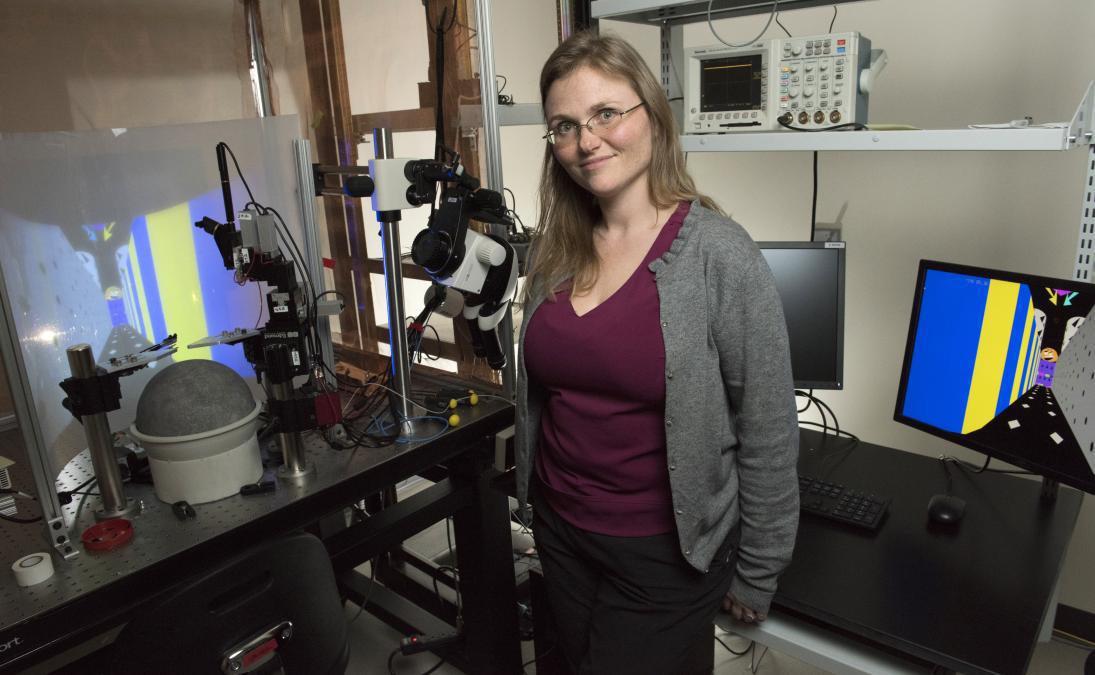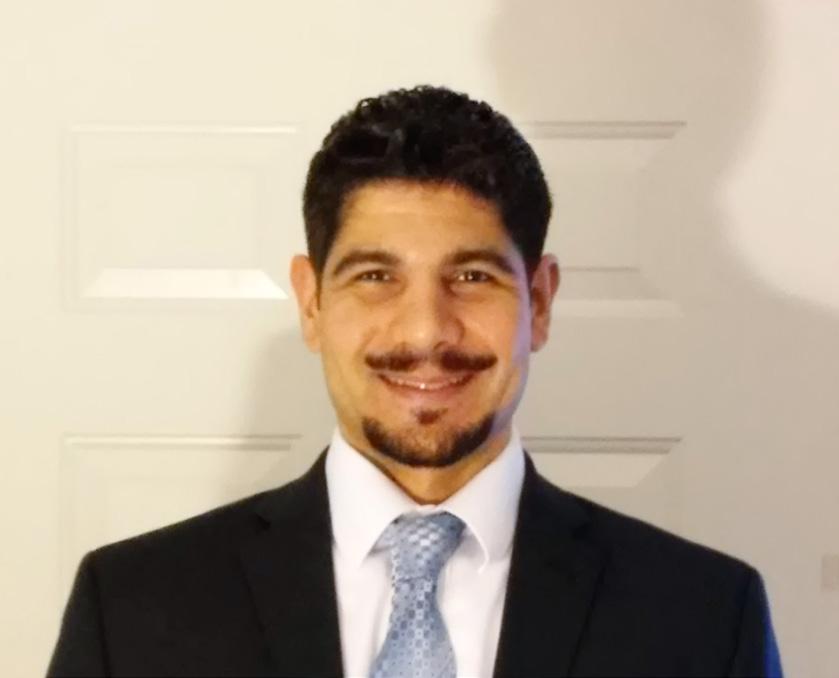
5 minute read
Let there be Light
ending Alzheimer’s Disease
Annabelle Singer and her team are on a mission to eradicating Alzheimer's disease. We sat down with the GA Tech & Emory BME Professor/Researcher and here's what she had to say:
Advertisement
GT/Emory NEC: Tell us about your research using light and sound and how it may help people with Alzheimer’s disease. Singer: Inspired by deficits in neural activity I found in mouse models of Alzheimer’s disease, I and collaborators discovered that driving gamma oscillations (oscillating electrical activity around 40Hz) reduced amyloid beta, a protein whose aggregation is thought to initiate degenerative events in Alzheimer’s disease (Iaccarino and Singer et al. 2016). After initially using invasive optogenetics to drive gamma, we then determined that simple flickering lights and sounds at gamma frequency (similar to a fast strobe light and beeping) drives gamma oscillations in memory circuits. This gamma sensory stimulation recruits immune cells, improves neural codes for memory, and rescues memory behavior (Singer et al. 2018, Martorell and Paulson et al. 2019, Paulson et al. in prep). We completed a feasibility trial of sensory stimulation for brain activity in patients with early-stage Alzheimer’s disease in collaboration with Emory Brain Health Center (He et al. 2021). We found that this stimulation affects the human neuroimmune system and strengthens brain networks weakened in Alzheimer’s disease. These discoveries reveal new ways to non-invasively manipulate the human neuroimmune system and non-invasively target memory circuits in humans. These findings have paved the way for more clinical trials currently underway. Thus, this novel stimulation approach holds promise as a breakthrough treatment for Alzheimer’s disease and other diseases.
GT/Emory NEC: How did you come up with the idea of using light and sound as a possible therapy?
Singer: We initially used invasive but powerful optogenetic stimulation to drive gamma oscillations. This is not readily translated to humans. Emery Brown, a neuroscientist and neurosurgeon, suggested we try light flicker and look at the effects in visual cortex to test our hypothesis via another stimulation method. That is based on decades of studies showing light flicker drives rhythmic activity in visual areas. However, we did not know how to target non-sensory areas. We tried several things and found combined audio-visual flicker for ~1 week leads to reduction of amyloid beta in memory circuits.
GT/Emory NEC: For this experiment, mice were placed in a cage in a dark room. While inside the cage, the mice were exposed to LED lights flashing at a frequency of 40 hz (40 beats per second). During the human trials, how did you replicate this light/sound method in Alzheimer’s patients?
Singer: In our published studies, human subjects wore eye glasses that flicker and headphones to play the flickering sound. In some ongoing studies, we’re working with different flickering devices.
GT/Emory NEC: What were the results of the human trials?
Singer: We recently completed a feasibility trial of sensory stimulation for brain activity in patients with early-stage Alzheimer’s disease in collaboration with Emory Brain Health Center. We found that this stimulation affects the human neuroimmune system and strengthens brain networks weakened in Alzheimer’s disease. We next discovered that sensory flicker reduces pathological epileptiform activity in patients with epilepsy (in a manuscript currently under review). These discoveries reveal new ways to non-invasively manipulate the human neuroimmune system, target memory circuits in humans, and reduce pathological neural activity in humans.
GT/Emory NEC: So what are the next steps?
Singer: Longer, larger clinical trials. We’re also pursuing other indications/diseases.
GT/Emory NEC: Any advice for aspiring Researchers interested in pursuing neural careers?
Singer: Fail fast. That means take big risks but de-risk fast and pivot when things don’t work. Dream big, but also have some “bread and butter” projects to keep you going.
GT/Emory NEC: Tell us something about you that people would be surprised to know.
Singer: I’m the youngest of 7 kids, born on 3 continents.
GT/Emory NEC: What impact or contribution would you like your legacy to be?
Singer: First, to have helped people with neurodegenerative disease. Second, developing a new field that engineers neural activity to program brain immune function and treat multiple neurological and psychiatric diseases.
Watch the PBS special "Your Fantastic Mind" to get a glimpse of Singer's research. Hear from an actual patient from the human trials at 34:00 mins https://www. pbs.org/video/memory-qwrgkm/
GA Tech and Emory's Computational Neuralengineering Training Program (CNTP) is Expanding! Scholars

Welcome New Fellows, Scholars, and Faculty
The Georgia Tech/Emory CNTP is an NIH sponsored research training program, funded specifically through Grant from the National Institute of Biomedical Imaging neering (NIBIB). The program consists of 40+ PhD student Scholars within BME, ECE, BioE, or ML. Our training program trainees with faculty mentorship, professional development, experience throughout the trainees' matriculation in how to get involved at cntp.bme.gatech.edu/
Faculty Advisors
Neuralengineering

Expanding!
Fellows, Advisors
educational and through a T32 Training Imaging and Bioengistudent Fellows and program provides our development, and academic the program. Find out





Fellows

God's Beauty is her name -- yes literally-Nmachi (pronounced mah-chee) in the Igbo Nigerian culture means "God's Beauty". Not only does Nmachi Anumba have the beauty, but she has the brains to go with it. Speaking of brains, it was watching medical TV shows like Grey's Anatomy, that ultimately led her down the neural path.
Anumba is a 4th year Ph.D. student in the BME program at Emory University. Her research focuses on the effects of the Locus Coeruleus (LC) on global signals and quasi periodic patterns (brain waves that move when you're at rest) of the brain. The LC, which is a nucleus in the brainstem, produces a chemical called norepinephrine (NE). This chemical is associated with stress, arousal and mood. By using optogenetics (optogenetics uses light to stimulate the brain) and fMRI (which measures brain activity) to stimulate the LC, Anumba can examine how the release of this chemical affect brain activity in rats with healthy brain cells and those with Alzheimer's disease. This technology enables her to determine which neurons are active and which ones are inactive. In the rats with Alzheimer's, she can see how normal brain function is adversely being altered. The end goal (in the distant future) is to develop therapeutics that can prevent brain deterioration.
In her matriculation as a Ph.D. student, Anumba has also enriched her academic journey as a trainee in GA Tech and Emory University's Computational Engineering Training Program (CNTP). In fact, she was one of 4 trainees (the program has now grown to 43 trainees) inducted into the program when it began in Spring 2019. CNTP allowed her to do rotations (students in the BME program do not rotate labs) and encourages community and provide mentorship opportunities. "Faculty recommend things for you like internship opportunities or they may end up serving on your thesis committee or give feedback on presentations that we're required to give. Having an environment that fosters those relationships with faculty is the most valuable part of the program," says Anumba.
When Anumba wants a respite from academia, she loves to participate in activities with her church community, doing Crossfit, and learning new languages. Fluent in Spanish (she obtained her BA in Spanish during her undergraduate studies) and currently learning Korean (as a child, she watched a lot of

Korean TV shows), Anumba desires to share her passion for languages and science to improve communication with non-English-speaking populations. She believes that "everyone deserves equal accessibility to science, regardless of the language they speak."
Nmachi Anumba plans to graduate with her Ph.D. in Spring 2024 and hopes to pursue a career within Medical Technology or Global Regulatory Affairs so that she can help non-English-speaking communities better understand the medical devices that are produced in the United States. Meanwhile, she's carving her niche and paving a way for future scientists and researchers who aspire to follow in her footsteps.
Global – Passionate – Destined – that's Nmachi. This "God's Beauty" is truly living up to her name.





